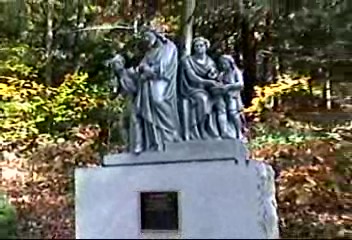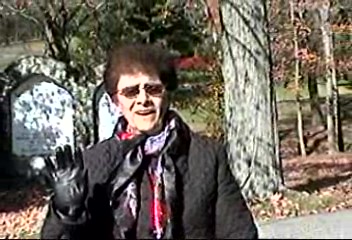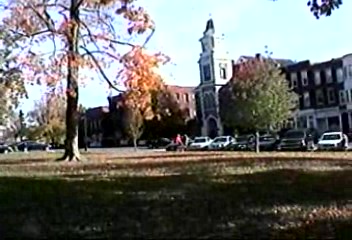
After a blissful Saturday, I woke up on Sunday ready to get churched and then explore to the southwestern corner of the state. In my meanderings the evening before, I passed by the a shrine to Our Lady of Lourdes near Litchfield at least four times, but by the time I woke the next morning, it had not occurred to me to start there for Mass. So, by the time if found my way there, I had missed their last outdoor Mass of the year and had to satisfy myself and Tamu with a long walk through the grotto and Stations of the Cross. It was a glorious fall day with just a bit of crispness, and the shrine, which occupies a very large property, drew a fairly large crowd of pilgrims.

On this particular Sunday, they were hosting a harvest dinner that included home cooked food from the parishioners: pumpkin soup, pork roast, sweet potato casserole, salad, cookies made from pumpkin. As luck would have it, I was seated across from Romilda, whose recipe was the basis of the cookies. She and I chatted throughout, so she sent me the recipe–I think I have tried making them once and did not do them justice. I also left with five water bottles to keep me and Tamu hydrated. I had nearly passed on the dinner because it seemed expensive, but I am so glad I stopped. It was filling and I got to chat with folks for a bit and get advice on sights to see ahead.
From there, I went into the Litchfield town green, which looked exactly as a Connecticut town green should. Tamu got another walk, and I ruminated about the dichotomies of Connecticut. Picturesque colonial towns dot the state, as do less affluent and ethnic areas. And by ethnic, I am including most of the folks from the Our Lady of Lourdes harvest dinner, who live further up the highway in towns that do

not offer colonial greens or exceptional restaurants for guidebooks to suggest. From the outside and through the tourist gaze, it is easy to consider the state as a collection of affluent WASP towns, but that’s not the full picture. There’s some struggling towns too, and a bit more diversity than I expected.
It was a leisurely Sunday in bright fall weather. I meandered down the highway, planning for my end point to be at the Long Island Sound. I made an effort to visit a winery near Brookfield offering pumpkin wine, but it was crowded and the picturesque drive, early sunset, and advice of fairly tipsy wine tasters sent me back to the road. My only aim had been the Weir Farm National Historic Park, which offers a glimpse into American Impressionism. But I did not push myself to get there. Instead, Tamu and I drove along the back roads and stopped to walk, giving him a chance to make friends and explore.

I stopped at the Norwalk River for a final scenic stop before the sun started to set. There are a number of towns in Ohio that are named for their counterparts in Connecticut because there was a large contingent of abolitionists who migrated from the East in the 19th century and settled in Ohio.
Norwalk is the namesake of my mother’s hometown in Ohio, and it is targeted for revitalization after a period of decline, a spot of rust on the Gold Coast. I continued further down to Greenwich, but I was losing the sunshine by this point and found that there was limited public access to anything, and very little to visit on a Sunday evening as the rest of the world prepared for the working week. I traveled north to Stamford, but it was very dark so I pressed on toward the hotel.
